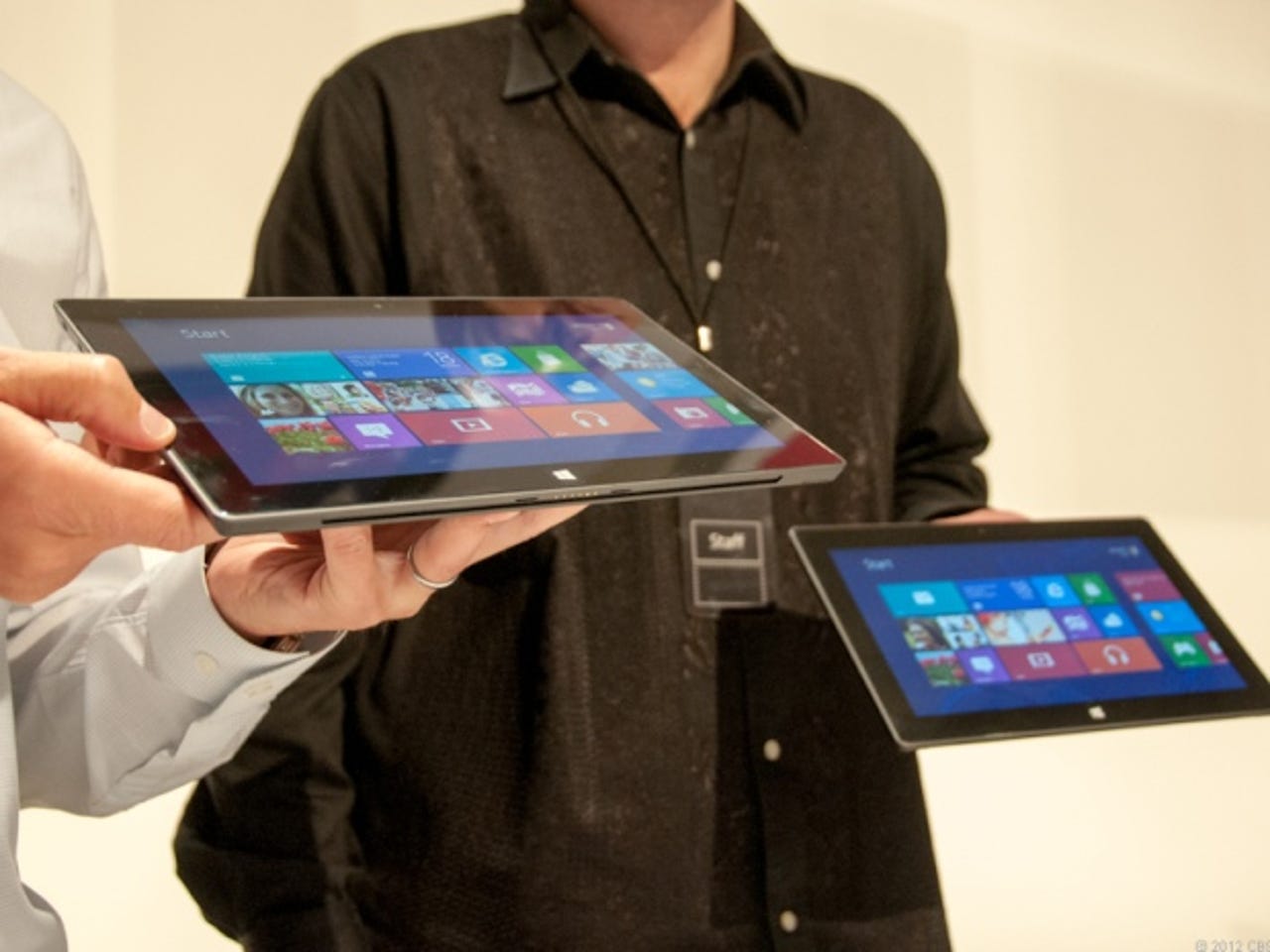Surface RT pricing puts Microsoft's tablet head to head with iPad

Word is out: we all knew Surface wasn't going to be a bargain-basement product, whether the RT or the Pro version. But Microsoft's chosen price point of between $499 and $699 puts it in direct competition with the iPad, today's premium tablet.

According to ZDNet's own Simon Bisson, Microsoft temporarily opened up its online store to show pre-order pricing for Surface RT on Tuesday, before quickly removing the page again. It has since opened it up again.
At Surface's unveiling in June, Microsoft was coy about the pricing card, saying only that the RT version would be comparable to "other tablets based on ARM". We now know that the base-level 32GB RT tablet will cost $499, rising to $599 bundled with a multitouch-capable keyboard case. The 64GB version is $699, with the TouchCover case included.
Read this
Pricing is still not known for the full-fat Intel-based Surface Pro devices, which are set to arrive around three months after the RT models. However, they are expected to cost around the same as ultrabooks, so somewhere near the $1,000 mark.
Shortly after the announcement in June, I wrote a piece about how Microsoft nearly got it right with its Surface tablets, but that the silence around pricing was worrying.
While clearly not the cheapest tablet in any given store — the Nexus 7 and Kindle Fire HD spring to mind — its designated market level puts it head to head with the $499-to-$699 iPad.
Naturally, if it's a straight slugging match between the two, Apple is going to land some blows when it comes to apps. Microsoft has been very late to the party in terms of getting its Windows 8 app store ecosystem going, but with time, all the key apps you want will probably be available for Windows 8 RT devices.
Hardware specs: advantage Microsoft
Where Microsoft does have an advantage is in the Surface's hardware features: at least it does on paper, as the company is still not exactly dishing models out for people to find out hands-on.
The Surface has a slightly larger display than the iPad - 10.6 inches versus 9.7 inches - and has a quad-core Nvidia Tegra processor under the bonnet, as opposed to the Apple slate's dual-core A5X chip. It also has 2GB of RAM, more than most tablets available on the market, including the new iPad with its 1GB configuration.
Add in the fact that for the same price as a 64GB iPad, you get a full keyboard and multitouch-capable touchpad, and I'm struggling to see why anyone would choose the iPad, beyond for specific apps not on Windows 8's marketplace.
But where Microsoft could stumble is the lack of 3G and 4G options, which the iPad can offer. The Apple device also has a wide-screen display resolution of 2,048x1536, compared to the Surface's 1,366x768 pixels.
The BYOD crowd
Nevertheless, if you take into account that for Surface to succeed in the enterprise, Microsoft must also win over the BYOD crowd, I think the Surface RT is sensibly priced. We'd always like to see products cheaper, but in terms of value for money, I can't see much of an argument for the iPad.
I'm struggling to see why anyone would choose the iPad, beyond for specific apps not on Windows 8's marketplace
As Mary Jo Foley pointed out, the Surface isn't being presented as a consumption-only device. If you're creating documents, files and folders for work on your own tablet, your IT department is more likely to be willing to support an operating system that ties into what it will be rolling out across the fleet.
In some way, Apple may have made it easier for Microsoft to sell its Surface tablets. If people are used to routinely handing over $500 or more for a tablet that is best suited to media consumption, social networking and light browsing needs, just think how happy they should be to pay for a tablet that is much closer to being a laptop than a tablet.